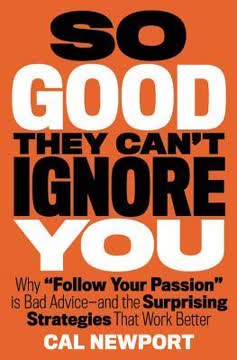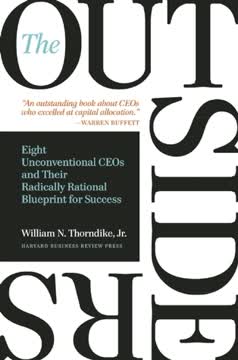Key Takeaways
1. Observe and read people to navigate workplace dynamics
You can't win at workplace poker if you only play the games that are comfortable.
Read people like a poker pro. Develop the ability to observe and understand the motivations, fears, wants, and attitudes of your colleagues. Pay attention to behavioral extremes, facial expressions, and body language. Establish a baseline for each person's typical behavior and notice deviations. This skill will help you navigate office politics more effectively and gain a more accurate perception of your workplace culture.
Gather information strategically. Ask neutral, open-ended questions to learn about your colleagues without raising suspicion. Observe interactions in various settings, including meetings, presentations, and social events. Notice who has real influence, who is respected, and who is good at navigating workplace dynamics. Build a network of connections across the organization to keep your finger on the pulse of the company.
Key observation areas:
- Formal and informal hierarchies
- Social networks and cliques
- Individual communication styles
- Decision-making processes
- Reactions to stress or change
2. Understand and adapt to your organization's unique culture
Don't expect the culture to accommodate you. You should flex to align with the culture.
Identify your workplace culture. Every organization has its own unique culture, which can significantly impact your career success. Recognize the type of culture you're working in, such as a Cult of Personality, Culture of Contraction, Coliseum Culture, Perma-Grin Culture, or Inbred Culture. Each type requires different strategies for success and survival.
Adapt your approach. Once you understand your organization's culture, adjust your behavior and communication style accordingly. In a Cult of Personality, focus on supporting the leader's ego. In a Culture of Contraction, create value that's not easily duplicated. In a Coliseum Culture, ensure you're not at the bottom of the performance ranking. In a Perma-Grin Culture, maintain a positive attitude even in difficult situations. In an Inbred Culture, learn the internal language and history.
Cultural adaptation strategies:
- Learn the unwritten rules and norms
- Align your work style with cultural expectations
- Build relationships with cultural "insiders"
- Respect traditions while proposing changes carefully
- Be aware of cultural taboos and sensitive topics
3. Take full responsibility for your career circumstances
There is no career luck, good or bad. No accidental circumstances. No victims.
Own your decisions. Embrace full accountability for your career circumstances, even when external factors seem to be at fault. Recognize that your choices and actions have led you to your current situation. This mindset shift empowers you to take control of your career and make changes when necessary.
Learn from mistakes. Instead of making excuses or blaming others, analyze your past decisions objectively. Ask yourself: What did I do (or fail to do) to create these circumstances? Why did I make these choices? What have I learned? How will my mindset be different moving forward? Use this self-reflection to improve your decision-making and avoid repeating past mistakes.
Steps to take responsibility:
- Acknowledge your failings without beating yourself up
- Watch your language (avoid phrases like "it's not fair" or "I can't help it")
- Build self-awareness through regular reflection
- Be proactively accountable by identifying and addressing obstacles
- Eliminate excuses and focus on what you can control
4. Fuel your fire with physical, emotional, mental, and aspirational energy
If you aren't finding ways to promote yourself and your work, you are essentially demoting yourself, while other people are proactively promoting themselves.
Boost your physical energy. Prioritize cardiovascular and strength training, restful sleep, and regular movement breaks throughout the workday. Eliminate or reduce refined sugars, processed foods, and alcohol from your diet. These habits will improve your overall health, vitality, and ability to perform at work.
Enhance your mental energy. Work in 90-120 minute time blocks, followed by 15-minute breaks. Align your work with your natural energy cycles, tackling challenging tasks during your peak hours. Take a short afternoon nap to recharge. Minimize distractions and focus on high-value tasks.
Cultivate emotional and aspirational energy. Foster a sense of being known, valued, and safe in your workplace. Develop a compelling career vision and identify the impact you want to have. Align your daily work with your long-term goals and values to maintain motivation and engagement.
Energy-boosting strategies:
- Physical: Exercise, sleep, nutrition, movement breaks
- Mental: Time blocking, energy cycle alignment, strategic breaks
- Emotional: Recognition, authentic self-expression, supportive relationships
- Aspirational: Clear career vision, meaningful work, continuous growth
5. Balance emotional strength with sensitivity to rejection
Being likable isn't the same as wanting to be liked. Trying too hard or wanting too much to be liked can be especially unlikable.
Develop emotional resilience. Recognize that rejection and criticism are inevitable in any career. Strive to be more of a "Teflon Rhino" than a "Velcro Butterfly" - let negative feedback and rejection slide off you rather than sticking and weighing you down. However, maintain enough sensitivity to remain empathetic and connected to others.
Handle rejection productively. When faced with rejection or criticism, avoid getting angry or dwelling on it. Instead, laugh it off, learn from it, and move forward. Recognize that not everyone will like you or your ideas, but that doesn't diminish your value or potential. Use rejection as an opportunity for growth and self-improvement.
Strategies for handling rejection:
- Acknowledge your feelings without letting them control you
- Analyze the rejection objectively for valuable feedback
- Maintain perspective - one rejection doesn't define you
- Use rejection as motivation to improve and prove doubters wrong
- Surround yourself with supportive people who believe in you
6. Strategically promote your capabilities and contributions
Promote yourself without appearing to be a self-promoter.
Create a career performance portfolio. Develop a comprehensive collection of your accomplishments, success stories, work samples, awards, and testimonials. Use this portfolio to showcase your capabilities during job interviews, performance reviews, and when seeking new opportunities within your organization.
Master the whiteboard. Develop the ability to visually communicate complex ideas through simple drawings. This skill can help you stand out in meetings and presentations, demonstrating your ability to synthesize information and think strategically.
Leverage informal opportunities. Take advantage of casual interactions with colleagues and superiors to share updates on your projects and accomplishments. Be enthusiastic about your work and ask for their perspective on specific aspects of your projects.
Self-promotion tactics:
- Document and archive samples of your best work
- Share credit and promote the work of others
- Use social media strategically to highlight your expertise
- Volunteer for high-visibility projects
- Seek out speaking and writing opportunities in your field
7. Influence others through personal rapport and connection
Be somebody who makes everyone feel like somebody.
Develop genuine charm. Focus on making others feel valued and respected. Show sincere interest in their thoughts, ideas, and experiences. Ask thoughtful questions and listen actively. Develop a reputation for being warm, approachable, and easy to work with.
Master the art of conversation. Learn to engage others fully, without distraction. Make direct eye contact, use people's names, and show that you're truly listening. Develop your ability to make others smile and laugh, but keep your humor clean and focused on situations rather than individuals.
Build a strong network. Cultivate relationships across all levels of your organization. Be friendly with everyone, but avoid aligning yourself exclusively with one group. Develop the ability to connect with difficult personalities and turn potential adversaries into allies.
Rapport-building techniques:
- Practice active listening and empathy
- Find common ground and shared interests
- Remember and follow up on personal details
- Offer genuine compliments and appreciation
- Be reliable and follow through on commitments
8. Make effective decisions to accelerate your career trajectory
A good solution applied with vigor now is better than a perfect solution applied ten minutes later.
Apply a balanced decision-making approach. When faced with important career decisions, use a combination of emotional awareness (Buddha), logical analysis (Spock), decisive action (Patton), and investigative skepticism (Sherlock). This multi-faceted approach will help you make more informed and effective choices.
Gather comprehensive information. Don't rely solely on assumptions or limited data. Seek out multiple perspectives, ask probing questions, and consider potential long-term consequences. Be aware of your own biases and emotional drivers that might cloud your judgment.
Take decisive action. Once you've gathered sufficient information and analyzed your options, don't let the pursuit of a perfect solution paralyze you. Make the best decision you can with the available information and resources, then commit to your chosen course of action.
Decision-making framework:
- Identify your deepest emotional desires and potential biases
- Gather and analyze relevant facts and data
- Consider potential outcomes and consequences
- Make a decision and commit to action
- Remain open to new information and be willing to adjust as needed
9. Bounce back quickly from career adversity and setbacks
If you want something, ask directly.
Develop mental resilience. Prepare yourself mentally for the inevitability of career setbacks. Understand that failures, rejections, and unexpected challenges are part of every successful career journey. Cultivate a growth mindset that views setbacks as opportunities for learning and improvement.
Take immediate action. When faced with adversity, resist the urge to wallow in self-pity or anger. Instead, focus on what you can control and take immediate steps to improve your situation. Update your résumé, expand your network, acquire new skills, or explore new opportunities. The faster you start taking positive action, the quicker you'll bounce back.
Learn from setbacks. Analyze what went wrong and identify lessons for the future. Be honest with yourself about your role in the situation, but avoid excessive self-blame. Use the experience to refine your career strategy and make better decisions moving forward.
Resilience-building strategies:
- Develop a strong support network
- Maintain perspective - most setbacks are temporary
- Focus on solutions rather than problems
- Practice self-care and stress management techniques
- Set new goals and create an action plan for achieving them
Last updated:
FAQ
What's Workplace Poker about?
- Career Dynamics: Workplace Poker by Dan Rust delves into the intricacies of career advancement, focusing on the skills needed beyond talent and hard work.
- Office Politics: It highlights the importance of understanding workplace dynamics and the "game under the game" that affects career paths.
- Practical Insights: The book is grounded in Rust's extensive business experience, offering practical advice rather than manipulative tactics.
- Personal Responsibility: A central theme is taking full responsibility for one's career, learning from failures, and making proactive changes.
Why should I read Workplace Poker?
- Career Advancement: If your career feels stagnant despite your efforts, this book provides strategies to help you move forward.
- Real-Life Examples: Rust shares stories from his career and others, making the principles relatable and applicable.
- Personal Growth: It encourages self-reflection and accountability, helping you understand your role in your career trajectory.
What are the key takeaways of Workplace Poker?
- Reading People: Understanding colleagues' motivations and behaviors is crucial for navigating office politics.
- Emotional Resilience: Balancing emotional strength with sensitivity helps in dealing with rejection and setbacks.
- Self-Promotion: Strategically promoting your capabilities is necessary without appearing boastful.
What are the best quotes from Workplace Poker and what do they mean?
- Mercenary Mindset: “You are a mercenary, like it or not, and you always will be.” This highlights the need to prioritize professional objectives over personal relationships.
- Interpersonal Skills: “The key to poker mastery isn’t reading the cards, it’s reading the people.” Success often hinges on understanding others rather than just technical skills.
- Personal Accountability: “I created these circumstances, and that may be painful to acknowledge.” Accepting responsibility is crucial for growth.
What is the "game under the game" mentioned in Workplace Poker?
- Unspoken Rules: It refers to the hidden dynamics that influence workplace interactions and decisions.
- Observational Skills: Developing the ability to read people and situations is essential for identifying these dynamics.
- Strategic Decisions: Understanding others' motivations helps in making informed decisions aligned with career goals.
How can I improve my emotional resilience according to Workplace Poker?
- Balance and Sensitivity: Find a balance between emotional strength and sensitivity to others' feelings.
- Learn from Setbacks: View failures as learning opportunities rather than personal defeats.
- Support Networks: Build a network of supportive colleagues and mentors for encouragement and guidance.
What strategies does Workplace Poker suggest for self-promotion?
- Highlight Contributions: Recognize and ensure your achievements are visible to decision-makers.
- Engage in Conversations: Share insights and ideas in discussions to showcase expertise and build rapport.
- Seek Feedback: Regularly ask for feedback to adjust your self-promotion strategies.
How does Workplace Poker define personal responsibility?
- Owning Circumstances: Acknowledge your role in your career circumstances, whether positive or negative.
- Rejecting Blame: Eliminate excuses and blame-shifting to empower yourself for change.
- Proactive Mindset: Seek solutions and opportunities for growth actively.
How does Dan Rust define a "Teflon Rhino" and a "Velcro Butterfly"?
- Teflon Rhino: Individuals who handle criticism and rejection without affecting their self-esteem.
- Velcro Butterfly: Sensitive to criticism, often taking things personally, which can hinder career progression.
- Finding Balance: Strive for a balance between the two styles to enhance resilience and interactions.
What strategies does Workplace Poker suggest for dealing with difficult colleagues?
- Teflon Rhino Approach: Maintain professionalism and kindness, not letting negativity affect performance.
- Building Alliances: Create a support network by aligning with colleagues who share your values.
- Using Humor: Incorporate humor to diffuse tension and create a positive atmosphere.
What role does self-promotion play in career advancement as discussed in Workplace Poker?
- Essential Skill: Self-promotion is necessary for career advancement in a competitive environment.
- Personal Brand: Create a personal brand highlighting skills and achievements through networking and online presence.
- Balancing Act: Promote your work while remaining humble to be perceived positively.
How can I effectively navigate workplace politics according to Workplace Poker?
- Understand Dynamics: Learn the relationships and decision-making processes within your workplace.
- Build Relationships: Develop strong connections with colleagues at all levels for support and opportunities.
- Stay Professional: Maintain professionalism, avoid gossip, and focus on constructive communication.
Review Summary
Workplace Poker receives mostly positive reviews, with readers praising its practical advice for navigating office politics and advancing one's career. Many find the book insightful, relatable, and filled with useful strategies for workplace success. Some appreciate the author's storytelling and humor, while others note the book's emphasis on self-awareness and adaptability. Critics argue that some advice is common sense or outdated. Overall, readers recommend it as a valuable resource for professionals at various career stages, particularly those new to the corporate world.
Similar Books










Download PDF
Download EPUB
.epub digital book format is ideal for reading ebooks on phones, tablets, and e-readers.




